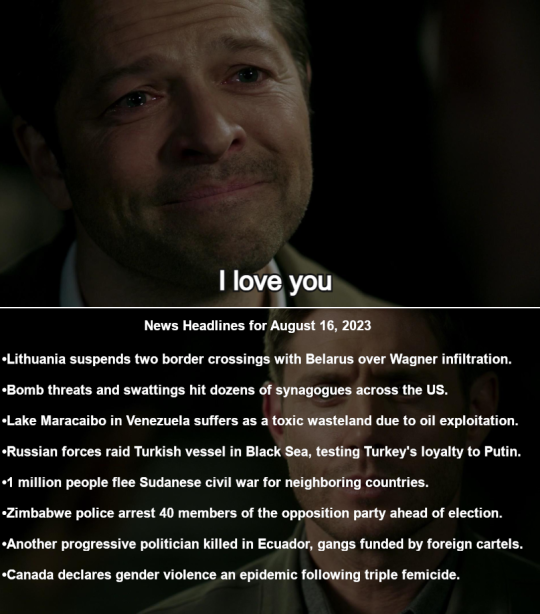#Lake Maracaibo
Text

#photography#nature#explore#lol#science#gifs#travel#lake#lightning#strikes#weather#education#phenomena#Venezuela#Catatumbo River#Lake Maracaibo#thunderstorms#storms#meteorology#night sky#night photography#lights#evening#sky#clouds#energy#electricity#slow motion
47 notes
·
View notes
Text
Lake Maracaibo, which is South America’s oldest lake and forms part of a crucial regional ecosystem, is dying. The five thousand square miles ecologically diverse body of water, which is home to 145 species of fish, sits at the heart of one of the world’s richest petroleum-producing regions. The lake formed around 36 million years ago and is considered the largest natural lake in South America despite being connected to the Caribbean Sea. Over a century of oil production in Venezuela’s prolific 25,000 square mile Maracaibo Basin, where over 30 billion barrels of crude oil have been lifted, has left Lake Maracaibo heavily polluted.(..)
P.S. Venezuela’s socialism and "big oil" is very bad combination for nature. In addition, the price of the negative consequences of the oil business is not only CO2 and air pollution emissions, but also other polluting factors, such as dictatorial and bloodthirsty political regimes supported by Russia and massively polluted water bodies and soil...
#Venezuela#Maracaibo#Lake Maracaibo#socialism#big oil#expensive fossil fuel#pollution#water#dictatorship#russian invasion#failed state
0 notes
Text
Venezuela's Everlasting Thunderstorm
Lake Maracaibo, located in western Venezuela, is home to a unique and breathtaking natural phenomenon known as the “Lightning Capital of the World.” With over 250 thunderstorms per year, this area experiences an unparalleled number of lightning strikes, earning it the title of the world’s most electric place. On a good year, there will be only a handful of days without thunderstorms.
The…
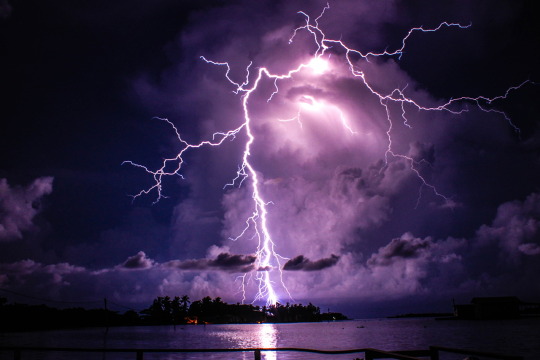
View On WordPress
0 notes
Text
Nothing crueler than taking a sea guy away from the sea
#which reminds me i should read some moby dick before going to sleep#me 🤝 ishmael: the allure of the sea#i dont think it matters cuz i havent lived there in 6 years but im from maracaibo which is in the coast#not actually the Caribbean coast we are by a lake (or gulf to be precise) that connects with the sea#theres a public park i loved to visit right on the border of the lake. ahhh every day i mourn the sea breeze
5 notes
·
View notes
Photo

Discovery and conquest of the Caribbean Sea by the Spanish, 1492-1595.
« Westermann Großer Atlas zur Weltgeschichte », 1997
by cartesdhistoire
On October 12, 1492, Christopher Columbus reached San Salvador in what is now the Bahamas archipelago, then he discovered the northeast coast of Cuba and Haiti (La Española). During a second expedition, he discovered Dominica and Guadeloupe, then he explored the south coast of Cuba and discovered Jamaica (Santiago). His brother Bartolomé founded Santo Domingo in 1498. In 1508, Ponce de León named a harbor on the island Puerto Rico, which took its name, then he founded San Juan in 1511.
During his third voyage, in 1498, Columbus reached the island of Trinidad and discovered the mouths of the Orinoco River: the flow of the river indicated that the hinterland was much larger than the islands previously discovered. So, the idea of “mainland” began to emerge. In 1499, Alonso de Ojeda, accompanied by Amerigo Vespucci, explored the coast from east to west, starting from Guyana. On the shores of Lake Maracaibo, upon seeing Indians living in huts on stilts, he named this region “Venezuela”, meaning little Venice.
Rodrigo de Bastidas discovered the mouth of the Magdalena River and was the first to land on the Isthmus of Panama in 1500. During his fourth voyage, Columbus sailed along the coast of the isthmus from present-day Honduras (1502). Vasco Nuñez de Balboa founded Santa María la Antigua del Darién in 1510, the first permanent colony on the mainland, then he discovered the “South Sea” in 1513. Pedrarias Dávila founded Panama in 1519.
In 1528, Charles V granted the exploitation of Venezuela to Augsburg bankers, the Welsers. The expedition of Nicolás de Federmán reached the land of the Muiscas in the Andes in 1539.
The first European to ascend the Orinoco was Diego de Ordaz in 1531 (he was also the first European to reach the summit of the Popocatépetl volcano in Mexico). Where the Orinoco narrows the most, Antonio de Berrío founded the town of Santo Tomás de Guayana in 1595.
In the Andes, Benalcázar founded the Spanish Quito in 1534, then Popayán in 1537, and Jiménez de Quesada founded Santa Fe de Bogotá in 1538.
97 notes
·
View notes
Text
Please reblog for a larger sample size!
If you know history and curiosities of Venezuela, please tell us and I'll share!
124 notes
·
View notes
Note
oh hey, river navigation in south america! I'd like to add about it: the Paraná and the Amazonas have historically been, and presently are, particularly convenient because they cut through land that's exceptionally difficult to traverse on foot. one being, of course, the goddamn amazon rainforest, and the other being a whole lot of treacherous marshland.
the Paraguay War was in most stages like a naval war being fought on land even, because armies could only meaningfully advance over the river. they generally only fought on land if the invaders were ambushed while making camp.
the Amazon River is also very interesting as a hub of both transportation and just settlement. even now, there's a whole lot of houses built partially into the water, usually inhabited by fishermen. we call them "ribeirinhos"!
(however, pity to end on a bleak note, but -- climate change has been a huge threat to their lifestyle...)
This is true. People REALLY understimate how hard was to travel through South America outside of rivers just a century ago. While I'm not an expert on the Triple Alliance War, I remember going to a museum visit in high school and people snickered at the "Paraguayan Navy" and... yes, of course they would have one, have you seen the rivers? River warfare in South America has a very important history since precolumbian times.
Also, those kinds of villages (we call them palafitos in Spanish) are also widely reported by the Spanish when they first went up the Paraná and Paraguay. They're also still widely found in Lake Maracaibo and elsewhere, though there are virtually none here (which makes no sense, as this is a floodable area, they are the ideal kind of house). But yes, I've seen the recent Amazon drought and it's heartbreaking, I have full hope it can be protected and restored though.
25 notes
·
View notes
Text
Creating a MegaDungeon pt 2 Islands

René Magritte The Castle of the Pyrenees
While in terms of volume, most of the Eye is taken up by the titanic storm walls that surround it and (try) to keep people out, in terms of adventure, it's all about the floating islands.
Now, in a fantasy RPG, you really don't need a reason to have wildly different enviroments next to each other. IT'S MAGIC, just suspend your disbelief and fight some orcs, but I did think of the bare minimum for why this might work in the internal logic of The Eye.
The Eye is created and maintained by magical winds, and all sorts of winds rush through the spaces between the islands (which is also why you can't easily fly between them, it's very dangerous).
These winds can be hot, cold, wet, dry, and even stranger still, which creates the myriad environments of the floating islands, and endless possibilities for adventure.
Here are just some of the idea's I've had so far
Karstic Plateaus
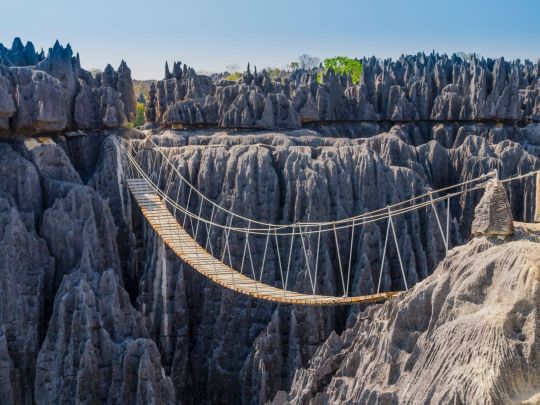
When water cuts through limestone in a very specific way you get formations like the above, in Tsingy de Bemaraha National Park, Madagascar. The spires aren't just beautiful but deadly as well, they are often razor sharp and the name of the park itself roughly translates to "where one cannot walk barefoot".
Great inspiration for an island, I think.
Lake of Thunder

There is a lake in Venezuela, Lake Maracaibo, where for a large portion of the year, for up to 10 hours a day, lightning continuously strikes it.
This is, in my opinion, perhaps the most fantasy thing ever. You put something like this in your game you have so many fun questions you get to answer. Why is the lake continuously bombarded by the heavens? How has life changed and adapted to live in this environment? What might be hidden here? Has the constant lightning affected the geography? So many possibilities.
Underwater Caves
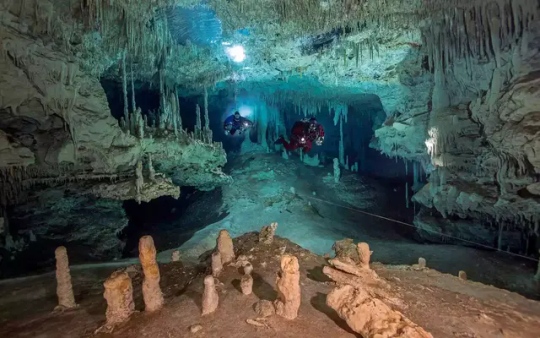
Underwater caves are terrifying, underwater cave diving is one of the most horrifying ways to die I can imagine and some people do that for fun.
Now, you might be wondering, how would you have underwater caves in a land of floating islands? Simple, you come to one island that seems to have a small lake or even a cave entrance on it's surface, and as you go down you realize this thing is mostly hollow. Hell, could even have some sneaky portals to other planes if you wanna make a proper huge maze
Anyway, this is just a few of the ideas I've had so far
Now I just need to actually figure out the best way to write and depict them, and also figure out a system to use, and finish the overarching story, and...
#rpg#ttrpg#indie ttrpg#dungeon#megadungeon#fantasy#flying island#floating island#ttrpg community#adventure#adventure creation#underwater cave
13 notes
·
View notes
Text

Basilica of Our Lady of Chiquinquirá (Maracaibo)
The Basilica of Our Lady of Chiquinquirá is the busiest Catholic temple in the state of Zulia in Venezuela, located in the center of the city of Maracaibo. A building dedicated to the Virgin of Chiquinquirá, patron saint of the state of Zulia. The basilica has 3 naves and 2 towers, a high altar, a presbytery and numerous niches dedicated to various saints
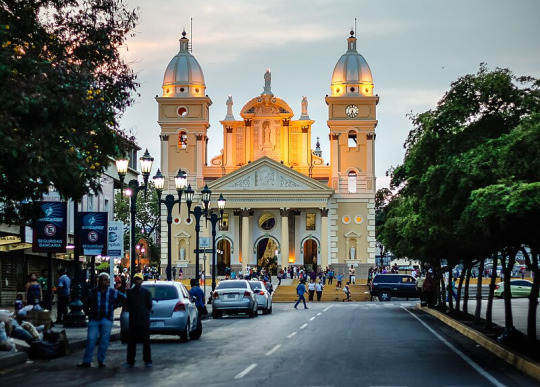
The Basilica of Our Lady of Chiquinquira is the busiest Catholic church in the state of Zulia in Venezuela, located in the center of the city of Maracaibo. A building dedicated to the Virgin of Chiquinquirá, patron saint of the state of Zulia. The basilica has 3 naves and 2 towers, a high altar, a presbytery and numerous niches dedicated to various saints.
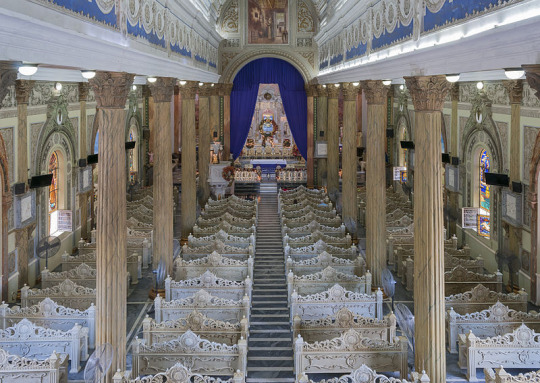
Panoramic view of its interior.
In 1686, Captain Juan de las Nieves Andrade built a hermitage of mud and straw in honor of San Juan de Dios, to whom he was devoted.
In 1709 the miracle of the restoration of the tablet took place. A humble lady found the tablet on the shores of Lake Maracaibo and placed it as the lid of a jar, then she heard a knock and some lights coming from her house and when she entered she found on the tablet the resplendent image of the Virgin and Child next to St. Anthony and St. Andrew. The image on the tablet became an object of pilgrimage for the devotees, and the tablet was transferred to the hermitage of San Juan de Dios, (now the Basilica).....
Around November 18 of each year, the basilica is the center of the Chinita Fair, an important socio-cultural event in the region, during which in addition to religious activities such as the procession and the descent of the virgin, events such as the bagpiper sunrise in front of the basilica, bullfights in the bullring of the monumental of Maracaibo, the lighting of the Christmas lights on Bella Vista and La Limpia avenues, the game of the Águilas del Zulia at the Luis Aparicio stadium, the Orchid Festival for Super Sábado Sensacional
Basilica of Our Lady of Chiquinquirá (Maracaibo) - Wikipedia, the free encyclopedia
8 notes
·
View notes
Text
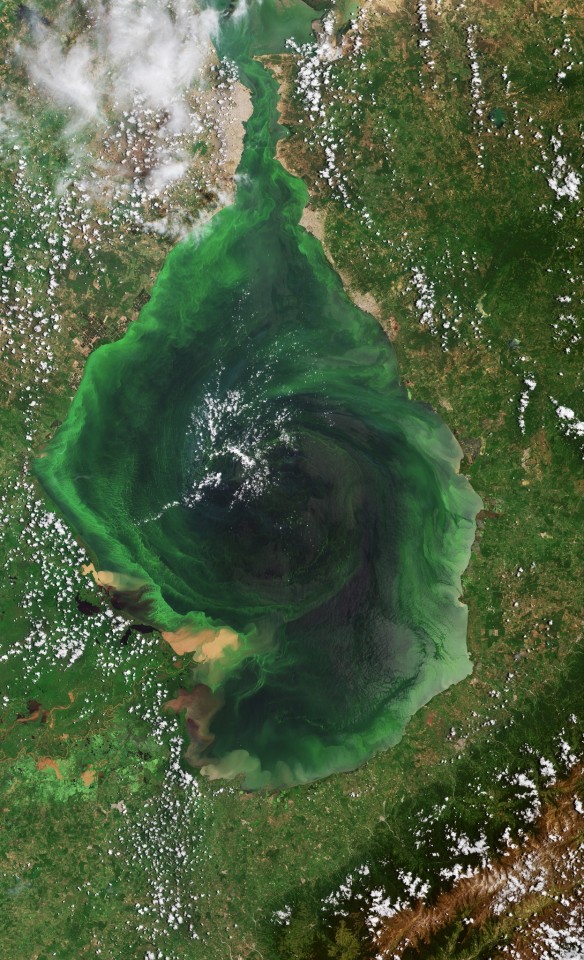
South America's largest Lake. Lake Maracaibo in Venezuela.
10 notes
·
View notes
Text

#photography#nature#explore#lol#science#gifs#travel#lake#lightning#strikes#weather#education#phenomena#Venezuela#Catatumbo River#Lake Maracaibo#thunderstorms#storms#meteorology#night sky#night photography#lights#evening#sky#clouds#energy#electricity#slow motion
34 notes
·
View notes
Text
Jean- David Nau aka François l'Olonnais - the horrible Buccaneer
Jean-David Nau (c. 1635?- 1670?), known as François l'Olonnais or Fleau des Espagnoles, was considered as one of the most terrible Buccaneers of the 17th century.
Alexandre Olivier Exquemelin ( Exquemelin came to the islands as an indentured servant. From his last master, he learned the skills of a surgeon and later sailed with Henry Morgan), whose book De Americaensche Zee-Rovers, published in 1678, is one of the most important source works on the history of piracy in the Caribbean, describes in the second part of his book the life of L'Olonnais, who was born in the harbour town of Les Sables-d'Olonne in the Bas-Poitou on the French Atlantic coast of unknown date but presumably around 1635, and is regarded as the source for him and his work, but what actually happened should be regarded with caution, even though his statements may well be more trustworthy than others.

François l'Olonnais (x)
After L'Olonnais had come to the Caribbean as an indentured servant at a young age and served his time, he came to the island of Hispaniola and after some time to the Buccaneers and became one of their leaders.
His apparently psychopathic character revealed itself on numerous occasions in the years that followed. When it came to obtaining information of any kind, he personally committed acts of bestial cruelty. One of his "preferences" was to hack his victims to pieces alive with a sabre or loveed it to burn his victims or cut out their tongues or hearts.
He received his first command from the governor of Tortuga, Monsieur de la Place. After some time, l'Olonnais was shipwrecked near Campeche in the Gulf of Mexico. A group of Spanish soldiers attacked him and his crew, killing almost the entire crew. L'Olonnais himself survived by smearing himself with the blood of the others and hiding among the dead. After the Spaniards left, he escaped with the help of some slaves and set off in a boat for Tortuga, where he obtained another boat by trickery. Shortly afterwards, he and his crew took the inhabitants of a small town on the north coast of Cuba hostage and demanded a ransom from the Spanish crown. The governor of Havana sent a ship to kill l'Olonnais' troop. However, the ship fell into the hands of the pirates. L'Olonnais had all but one of the crew beheaded. The man who was spared was to bring a message to Havana in which l'Olonnais declared that from now on he would show no mercy to any Spaniard.
In 1667, l'Olonnais set sail from Tortuga with a fleet of eight ships and a crew of 1,600 pirates to plunder Maracaibo. On the way there, he encountered a Spanish treasure ship off Hispaniola, which he successfully captured. In the process, he brought in rich booty of cocoa, precious stones and more than 40,000 pesos in silver. A second Spanish ship fell into his hands without a fight, along with ammunition, gun powder and 12,000 pesos.
At that time, access from the Gulf of Venezuela to the lake of Maracaibo (and thus to the city itself) was secured by a fortress with 16 cannons. However, L'Olonnais attacked the fortress from the unfortified land side and captured the city. The pirates then proceeded to loot the town, but found that most of the inhabitants had fled and hidden their gold. The pirates tracked down the inhabitants and tortured them until they revealed the hiding places of their possessions. For weeks, the pirates raped, tortured and harassed the townspeople. They removed the cannons from the fortress and destroyed almost the entire city fortifications to allow for a quick retreat. The pirates then turned south towards the village of Gibraltar (Zulia), on the southern shore of Lake Maracaibo, to plunder it too, because many of the town's inhabitants had fled there with their goods.
Although the pirates were outnumbered, they overpowered the garrison of Gibraltar, which is said to have consisted of around 500 soldiers, plundered the village and retreated back to Maracaibo. They demanded a ransom of 20,000 silver pesos and 500 cows and oxen for their departure. In total, they brought 260,000 silver pesos, precious stones, silverware, silk fabrics and a number of slaves in this raid, which they divided among themselves. The damage done in this way was so great that the city, which had previously been a major centre for the export of cocoa, almost ceased to exist.
Word of his attack on Maracaibo and Gibraltar reached Tortuga, and he was henceforth nicknamed "Plage des Spaniers" (French: Fléau des Espagnols). This made it easier for him to recruit participants for his next foray, and so later that year 700 pirates took part in his next attack on the Central American mainland. They headed for the coast of Nicaragua with Cabo Gracias a Dios, but drifted with the current into the Gulf of Honduras when there was no wind. After plundering Puerto Cavallo, l'Olonnais was ambushed by a large number of Spanish soldiers on the way to San Pedro, from which he narrowly escaped. He was, however, able to take some Spaniards prisoner. Exquemelin writes of this:
"He drew his sabre, and with it he cut open the breast of one of these poor Spaniards, and pulling out its heart with his blasphemous hands, bit and tore at it with his teeth, like a wild wolf, and said to the others: I will treat you likewise, if you show me no other way."
In fear of their lives, the surviving Spaniards showed him another way to San Pedro. However, L'Olonnais and his surviving men were repulsed and had to retreat to the ships. In the Gulf of Honduras, they ran onto a sandbank. Unable to get their ship free, they carpentered a new one from the remains, and eventually fell into the hands of the native population in the Gulf of Darién around 1670. Exquemelin writes that:
"they tore him to pieces alive, threw his body limb by limb into the fire, and his ashes into the air."
The seemingly fitting end for such a bestial man.
33 notes
·
View notes
Text
New Friday Factorio Facts. It's another planet reveal!
When I saw Vulcanus, my first thought was that it was Venus crossed with Io. By that same token, Fulgora is like Mars crossed with Lake Maracaibo.
The first thing that strikes me is aesthetic; the red dust and the cracked earth on top of the plateaus. The second thing that strikes me is lightning. There's a lot of that, storms all the time, so much electricity that charged dust floats off the ground.
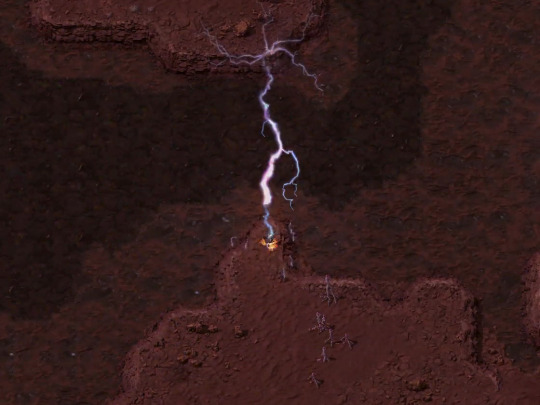
It feels like a fantasy version of Mars. The electricity doesn't fit into the picture, but its soil looks similar enough—just a different shade of red. It has Mars's river beds, but they aren't eons dry; they're still muddy, the engineer splishes as he crosses them. And of course, there's the remnants of a long-dead civilization.
Looking forward to next week's Friday Fulgora Facts. Gonna put my money on power generation being trivialized and oil/coal being present (there used to be abundant organic life around, after all!), but scarce iron and copper. Maybe this multicolored rubble is all the ore you get, and it's all mixed together, or something?

4 notes
·
View notes
Text
2023 Philadelphia Phillies Roster
Pitchers
#22 Michael Lorenzen (Fullerton, California)*
#25 Matt Strahm (West Fargo, North Dakota)*
#27 Aaron Nola (Baton Rouge, Louisiana)
#30 Gregory Soto (Bajos De Haina, Dominican Republic)*
#31 Craig Kimbrel (Huntsville, Alabama)*
#43 Yunior Marte (Santo Domingo, Dominican Republic)*
#45 Zach Wheeler (Dallas, Georgia)
#46 José Alvarado (Maracaibo, Venezuela)
#54 Dylan Covey (Pasadena, California)*
#55 Ranger Suárez (Pies De Cuesta, Venezuela)
#58 Seranthony Domínguez (Esperanza, Dominican Republic)
#61 Christopher Sánchez (La Romana, Dominican Republic)
#68 Jeff Hoffman (Colonie, New York)*
#99 Taijuan Walker (Yucaipa, California)*
Catchers
#10 J.T. Realmuto (Del City, Oklahoma)
#21 Garrett Stubbs (Del Mar, California)
Infielders
#5 Bryson Stott (Clark County, Nevada)
#7 Trea Turner (Lake Worth Beach, Florida)
#17 Rhys Hoskins (Sacramento County, California)
#28 Alec Bohm (Omaha, Nebraska)
#29 Rodolfo Castro (El Llano, Dominican Republic)*
#33 Edmundo Sosa (Ciudad Panama, Panama)
Outfielders
#3 Bryce Harper (Las Vegas, Nevada)
#8 Nick Castellanos (Plantation, Florida)
#12 Kyle Schwarber (Middletown, Ohio)
#16 Brandon Marsh (Buford, Georgia)
#18 Johan Rojas (San Francisco De Macorís, Dominican Republic)**
#19 Cristian Pache (Santo Domingo, Dominican Republic)*
#44 Andrew Cave (Hampton, Virginia)*
Coaches
Manager Rob Thomson (St. Clair Township, Ontario)
Bench coach Mike Calitri (Canton, Massachusetts)
Hitting coach Kevin Long (Phoenix, Arizona)
Assistant hitting coach Jason Camilli (Peoria, Arizona)
Pitching coach Caleb Cotham (Mt. Juliet, Tennessee)
Assistant pitching coach Brian Kaplan (St. Joseph County, Indiana)
Bullpen coach David Lundquist; Jr. (Carson City, Nevada)
Bullpen catcher Brad Flanders (Frisco, Texas)
Bullpen catcher Hector Rabago (Riverside, California)
1B coach Francisco Figueroa (Miami, Florida)
3B coach Dusty Wathan (Blue Springs, Missouri)
Infield coach Bobby Dickerson (Laurel, Mississippi)
#Sports#Baseball#MLB#Philadelphia Phillies#Celebrities#Louisiana#Dominican Republic#Venezuela#Georgia#New York#North Dakota#Alabama#Oklahoma#Nebraska#Panama#Nevada#Florida#Virginia#Ohio#Arizona#Texas#Indiana#Canada#Ontario#Massachusetts#Tennessee#Mississippi#Missouri
5 notes
·
View notes
Note
Random questions! 9, 12, 17, and 28 please :)
9. three places you want to go to
I'll list three places that I'm not going to in the foreseeable future rather than places I could very much possibly visit!
Lake Maracaibo, because I want to see Catatumbo lightning
Venice. If not Venice, then the Blue Grotto in Capri
Angkor Wat
12. i'm giving you a plane ticket, where are you going?
To see my parents...even though we video call all the time. I'm away right now because of my job...
17. you are in a fight, which tumblr account are you getting to help you?
...Would you help me? Lol.
28. do you have any siblings?
No, I'm an only child.
7 notes
·
View notes
